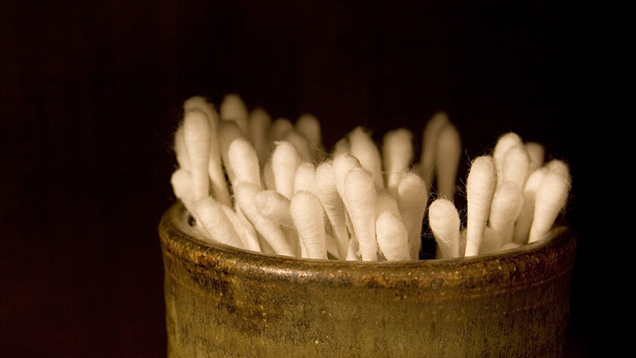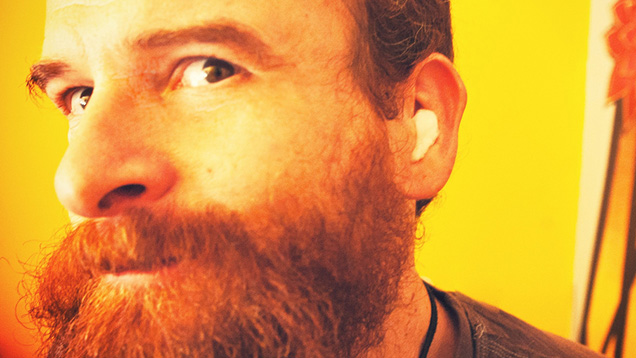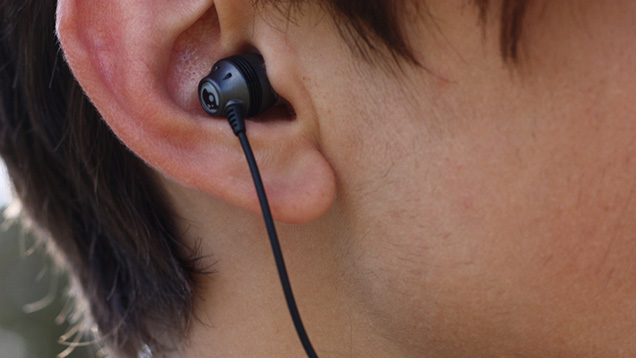We spend a good portion of the day using our sense of hearing, but we know very little about how to maintain our ears properly. There’s a lot of confusion out there about how to properly take care of our ears and maintain earwax, so let’s set the record straight.
Pictures: Tina Mailhot-Roberge, Nic McPhee, David Goehring, Lisa Brewster, Marcus Quigmire
We sat down with Dr Dan Weiswasser, a primary care physician, and asked him how to properly maintain our earwax (also known as cerumen). Here’s what he told us.
Stop Using Cotton Swabs

For starters, earwax plays an important role in protecting the outer ear from infection and trauma. Having a certain amount in your ears is healthy.
When you use a cotton swab to clean your ears, you’re actually pushing earwax further into your ear canal, and up against the eardrum. At worst, it could damage your external ear canal or even rupture the fragile eardrum.
“There is no need for routine ear care for most people,” said Weiswasser. “In my experience, the more aggressively you remove wax, the more aggressively the body will produce it, and this can lead to a vicious cycle.” It might feel funny to go without clearing your ears at first, but your body will adapt and gradually produce less earwax when you stop getting rid of it.
Generally, the movement of your jaw will propel the earwax to empty itself out of the ear canal. The point of earwax is to trap dirt and contaminants before they reach your inner ear, so getting rid of it could actually harm you. The old adage, “Put nothing in your ear smaller than your elbow,” rings true.
Even if you have water stuck in your ear, don’t use a cotton swab to dry it out. Instead, you can encourage it to evaporate by blowing on it with a hair dryer, set on cool, or by putting a couple of drops of rubbing alcohol in your ear.
Usually, routine bathing should take care of any earwax outside of your ears. If you really want to maintain the exterior of your ear, stick with something with shorter reach, like a cotton ball or kleenex — and don’t stick them into your ear canal. (A cotton swab may be too tempting.)
Avoid Sprays, Try Mineral Oil

If you haven’t had trouble with your eardrums in the past, it’s generally safe to use most kinds of room-temperature mineral oil to ease out stubborn wax. Weiswasser explained:
I generally advise the use of mineral oil. Baby oil is largely comprised of mineral oil but also often contains perfumes, which can be irritating and, thus, should be avoided. There are also over-the-counter earwax removal products, which, to my knowledge, have not been proven to be any more effective or safe. I advise against any use of hydrogen peroxide and against the use of any product for more than a few days, as both can lead to irritation.
If you find that your ears are blocked with too much wax, place a cotton ball dipped in mineral oil into your ear canal for 10-20 minutes once per week. Lean on your side, with the cotton-balled ear towards the sky.
Talk to Your Doctor for Manual Removal or Flushing the Canal

For most people, your earwax production should level out after a month or so at most. If you find that your ears are still blocked after the occasional use of mineral oil, visit your doctor’s office. Your doctor can manually remove the earwax with a specialised tool.
Alternatively, your doctor could also flush your ear canal out with water using a non-needled syringe. Based on his experiences, Weiswasser said that ear flushing is less likely to irritate the canal, but it does run the risk of eardrum rupture, especially if performed too aggressively.
Do not try either manual removal or flushing at home. Instead, leave both of these procedures to your doctor.
Irritated Ears Produce More Wax

If you still find yourself with a lot earwax after leaving it alone, something else may be irritating your ears. For example, you might be using your earbuds too much, or a skin condition like eczema could be affecting your ear canals.
If this excessive level of earwax continues even with the occasional use of mineral oil after a month or so, speak to your doctor.
Your Ears Will Thank You
As difficult as it may be to believe, our ears should have a little bit of earwax to stay healthy. Stop sticking things like cotton swabs into your ears, as the earwax will take care of itself. If you must remove your earwax, use mineral oil or speak your doctor about options such as manual removal or flushing. If you’ve still got excessive earwax, think about things your ear comes into contact with, or look further into the issue with a doctor.
Illustration:

Comments
6 responses to “How To Properly Maintain Your Ears And Earwax”
Comment removed.
Look I’m going to be perfectly honest and admit that I use cotton buds simply for the pleasure I derive from it.
It just feels so damn good. I may be a pervert…
You may be a Ferengi.
http://en.memory-alpha.org/wiki/Oo-mox
There is also nothing sexier
As a kid I had a “glue ear” which meant it produced lots of wax. I got many ear infections and was going to have to have grommets when it cleared up.
But I still get lots of wax – will try some of these ideas.
I get eczema in mine, only started about 5 or so years ago, as a result I get a decent amount of wax and dry flaky skin coming out. And they get irritated by earbuds sometimes.
I went to the doctor and managed to get some cream you can put in there which really helps. So doctor is probably the best option really instead of pouring oils and stuff in there.
Almost all mammals have ear wax. It’s a beneficial substance as it protects the skin within your ear canal. Interesting fact: ear wax has played an important role for scientists and anthropologists to track migratory patterns of our ancestors. There are two different types of ear wax: wet and dry ear wax. Native Americans and Asians are more likely to have dry ear wax, and those of African or European descent are more likely to have wet ear wax. Read more: http://www.hearlink.com.au/industry-news/spotlight-ear-wax-part-I/